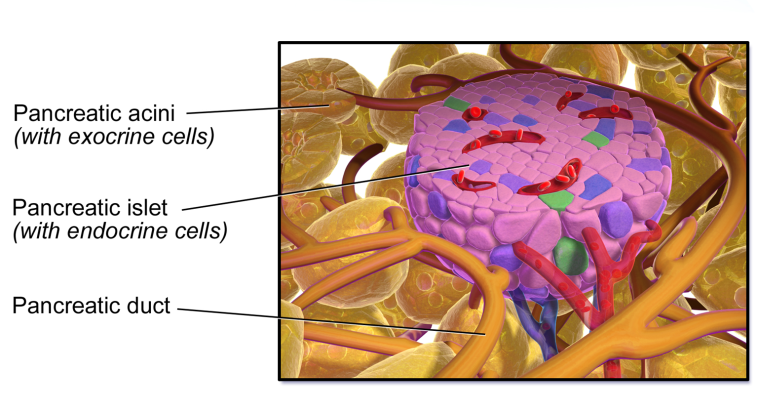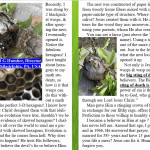[Originally published in 2014 as Cellular Communication – Another “Truth” Destroyed]
Naturalistic evolutionists are forced to look at the world very simply.
After all, they think there is no plan or design in nature. Instead, they believe that random events filtered by natural selection are responsible for all the marvels we see today. Because of this unscientific way of thinking, they tend to look for simple processes to explain amazingly complex interactions in nature.
Cellular communication is a perfect example of how this simplistic way of looking at things can produce serious errors.
In order for the different cells of an organism to be able to work together, they must communicate with one another. One of the most well-studied versions of cellular communication is called endocrine communication, and the insulin-producing cells in the islets of the pancreas (illustrated above) provide an example of how it works.
These cells produce insulin, which is then released into the bloodstream. When cells in the liver, skeletal muscles, and fat tissues are exposed to this chemical, they absorb glucose (a simple sugar) from the blood. By controlling the release of insulin from the pancreatic islets the body can control how much glucose is in the blood.
Now, of course, this is a great design for cellular communication that needs to affect a wide array of cells in many different places. It makes the release of the chemicals easy to control but their effect long-ranging. As a result, when the body needs widespread communication in different cells, endocrine communication is used. However, there are often times when cells need to communicate with other cells that are nearby. This is called paracrine communication, and biologists have taught (as fact) for many years that paracrine communication happens in essentially the same way as endocrine communication. For example, one of the volumes of the Handbook of Cell Signaling says:1
Paracrine interactions induce signaling activities that occur from cell to cell within a given tissue or organ, rather than through the general circulation. This takes place as locally produced hormones or other small signaling molecules exit their cell of origin, and then, by diffusion or local circulation, act only regionally on other cells of a different type within that tissue. (emphasis mine)
In other words, a cell releases some signaling chemicals, and those chemicals simply have to find their way to their targets via diffusion or some other local means of movement. Of course, such a signaling scheme is rather inefficient for communication with nearby cells, and new research indicates that it’s not the way paracrine communication is done.
Sougata Roy and his colleagues showed that in fruitflies, cells that want to communicate over short distances don’t simply release their signaling chemicals and hope for the best. Instead, these cells produce long tubes, called cytonemes, that can extend across the length of up to 100 cells! When these tubes touch their intended target, the signaling molecules are sent through the tubes so they can arrive at the very cell for which they are intended.2 This, of course, is a much more efficient way for cells to communicate when they are relatively close to one another.
Here’s an analogy
Suppose you are waiting in line for a movie and you see a friend about 30 people ahead of you. You want to talk to him to see if he would like to sit with you during the movie. Of course, you could just yell at him, but because the place is crowded and other people are talking, he might not hear you. Instead, you text him. He receives your text, and as a result, you both enjoy the movie together.
Obviously, the text is a more efficient means by which to communicate with your friend, because the communication goes directly to him and no one else. In a similar way, a cell could communicate with another cell by just throwing out a bunch of chemicals and hoping they get to the target cell, even though lots of other cells are exposed to them. It’s more efficient, however, for the cell to send those chemicals directly to the target cell, bypassing the cells that don’t need to be signaled.
This study shows that at least in fruitflies, cells use the more efficient strategy. Is this the way paracrine communication happens in most organisms? We don’t know yet. Cytonemes are short-lived, so they are hard to find. Thus, it will take some serious looking to decide whether or not this is the common mode of paracrine communication.
I predict that future research will show that it is. After all, since life is the result of our Almighty Creator, it only makes sense that it would use the most efficient process possible when it comes to each type of cellular communication that needs to happen.
References
- Intercellular Signaling in Development and Disease, Ralph A. Bradshaw and Edward A. Dennis (ed.), Academic Press 2011, pp. 11–12
- Sougata Roy, Hai Huang, Songmei Liu, and Thomas B. Kornberg, “Cytoneme-Mediated Contact-Dependent Transport of the Drosophila Decapentaplegic Signaling Protein,” Science doi:10.1126/science.1244624, 2014






